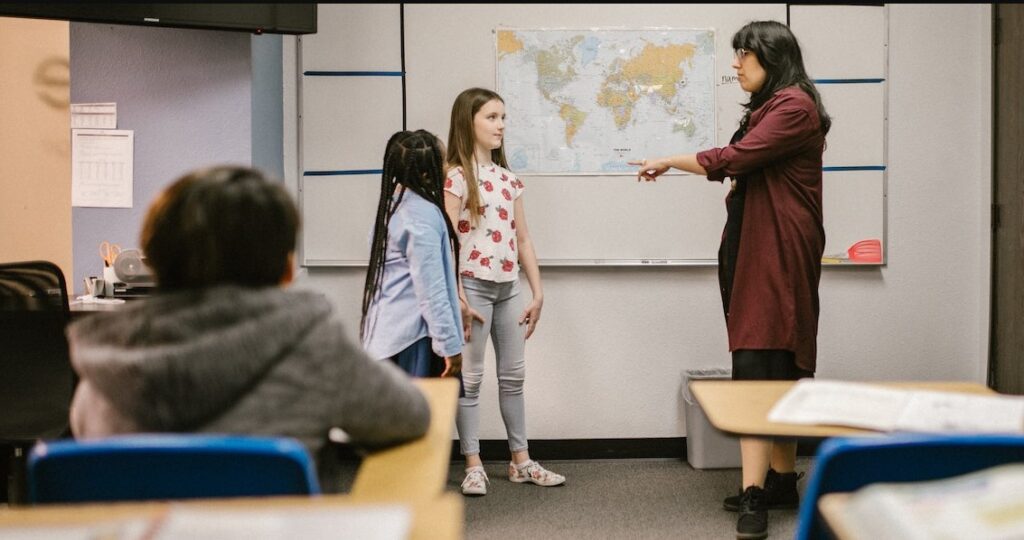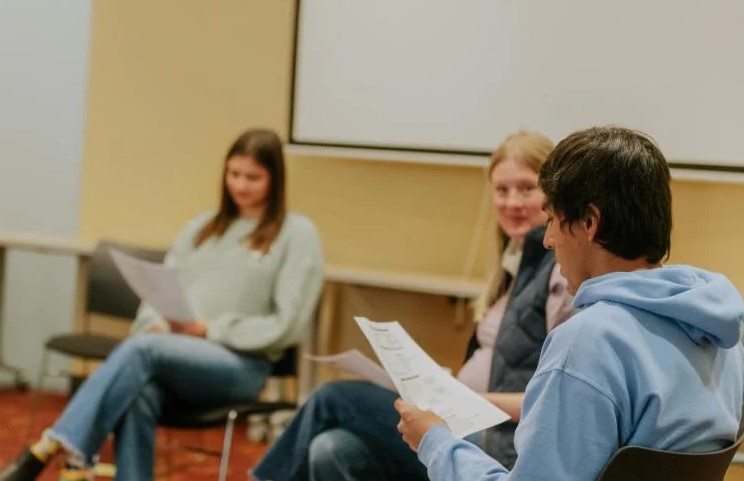
Conflict resolution in the classroom is very important. Students need to learn how to manage and solve conflicts with their classmates to create a peaceful and productive learning environment. When students can’t get along, it not only makes it hard for them to focus and learn, but it also takes up the teacher’s time, which could be spent teaching.
Conflict happens because people have different perceptions, attitudes, likes, and personalities. It’s important to understand that not everyone will see things the same way. This is especially clear when many people are involved. For example, even when two people agree on something, they can still conflict about the details. This often happens because each person interprets the terms and conditions differently.
In any group, including a classroom, conflicts can arise due to differences in values, interests, personalities, and attitudes. If teachers and students do not solve conflicts, they can disrupt class activities, lower productivity, and affect the mood and confidence of those involved. However, when teachers and students manage conflicts well, they can lead to deeper conversations, better understanding, and stronger relationships among students.
It’s important for parents, teachers, and students to learn about different conflict resolution strategies and practice them regularly. By promoting open communication, empathy, and understanding, they can solve conflicts positively. This approach creates a more supportive and united learning environment for everyone.
Here are 10 Conflict Resolution Strategies for Students.

1. Establishing a Positive Communication Environment:
It’s important to encourage students to share their thoughts and concerns in a way that shows respect and understanding. Actively listening to them, recognizing their feelings with empathy, and keeping an open-door policy are key strategies to build clear and open communication in the classroom. By using these practices, small misunderstandings can be stopped before they grow into bigger problems.
2. Implementation of Problem-Solving Workshops:
Taking part in workshops with problem-solving scenarios can be very helpful for students. These activities not only teach important conflict resolution skills but also show the value of teamwork and understanding others’ views. After the workshops, students can join feedback sessions, which give them a chance to review and improve their strategies. Additionally, group activities that focus on solving problems together help students develop key skills like teamwork, sharing, and fair conflict resolution.
3. Collaboration

This approach to conflict resolution highlights the importance of open communication and active problem-solving. By encouraging students to find solutions and work towards mutual understanding with their teacher and classmates, this method helps develop key skills like teamwork, empathy, creative problem-solving, and cooperation.
4. Focus on Problems, Not People
When conflicts happen, teenagers often blame others. It’s important to help your teen understand that they should avoid making personal attacks. Most conflicts don’t come from someone’s flaws, but from different perspectives or unmet needs. So, it’s helpful to guide your teen to focus on solving the problem instead of criticizing the other person. This is a key part of conflict resolution.
5. Compromise
Teach students the art of compromise, where both parties willingly make concessions to reach an agreement. This approach helps students understand the value of negotiation. Additionally, it allows them to navigate disagreements constructively and build important leadership skills. By practicing compromise, students learn to appreciate different viewpoints and find common ground. Ultimately, these skills will benefit them in both personal and professional relationships.
6. Promote storytelling

Share stories with your students and read storybooks with your children. Encourage your child to read or tell a story, then have a discussion about the characters’ actions and their consequences. Ask your child to share their thoughts on what is right or wrong. You can also try role-playing by creating different scenarios where your child plays various roles. This helps them understand different perspectives and empathize with others. For example, you can pretend to be a child who needs help, and your child can play the role of the helper.
7. Assertiveness
In some situations, an authoritative approach may be necessary, especially when safety or disruptive behaviors are involved. For example, in a classroom, it’s important to assert authority to keep all students safe and maintain order. This can be done by clearly stating expectations and consequences. However, it’s important to use this style sparingly. In less critical situations, focusing on open communication and understanding can create a more positive environment. Additionally, guiding students to express their needs assertively, while respecting others’ rights and opinions, helps build negotiation skills and empathy.
Read our other post : How to Gain Assertiveness Skill for Betterment
8. Restorative Circles
Restorative Circles are a conflict resolution method that involves the whole group. They can be very helpful for minor conflicts and communication breakdowns. In this process, students are gathered in a circle to openly discuss the conflict. Empathy and understanding are fostered through organized communication. This method helps build a sense of community and shared responsibility. As a result, conflicts are resolved more efficiently.
9. Practice Self-reflection

Encouraging students to practice self-reflection involves guiding them to think about their thoughts, feelings, and behaviors. You can provide tools for self-regulation by teaching techniques such as deep breathing exercises or journaling. These methods can help students manage stress and emotions. Teaching them how to handle intense emotions through breathing techniques is important. Deep breathing has been proven to help people stay calm during conflicts.
One effective technique is box breathing, which is a simple 4-count inhale/exhale method. This powerful stress-reduction strategy is easy for teens to learn and can be practiced in various settings. Taking one deep, slow breath can help teens clear their minds and get grounded before they speak up. This practice ultimately helps them communicate more effectively.
Additionally, engaging in age-appropriate community service activities can provide students with a sense of purpose and empathy. Activities like cleaning up a local park, organizing donation drives for charities, or visiting nursing homes can help students see the importance of helping others. Emphasizing that only humans can help encourages students to support and care for those around them. This fosters a sense of responsibility and compassion.
Read our Hindi Post : Post Link
10. Know how to apologize.
Mastering the art of apologizing can be challenging for many people. However, a sincere apology is essential for resolving conflicts. When parents model how to apologize for their mistakes, they teach teenagers the value of owning up to their errors. A meaningful apology does not include making excuses or using “buts.” Instead, the most effective apologies involve directly acknowledging the fault. For example, saying, “I was wrong, and I’m sorry I hurt you,” is a good approach. This type of apology shows responsibility and helps repair relationships.

